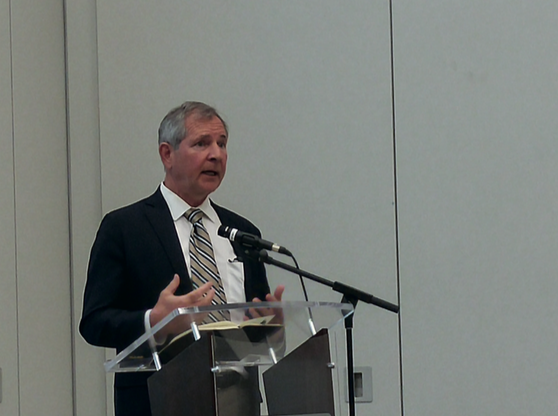By Michael Scoular (The Cascade) – Email

As of this article’s publication, the next provincial election in B.C. is less than 365 days away. At UFV, though the outcome of that contest will have more of a direct impact on what the future looks like than any other single decision, there will never be an official stance on the matter. Election talk, if it does show up in the classroom, is more likely to reflect the media’s laser focus on the American primaries. But students and their political attention span was the subject of one recent project here.
For the conclusion of a semester-long study into voting habits, a group of students recently presented their findings to an audience that included several municipal politicians, as well as Keith Archer, the chief electoral officer for Elections BC. The course, which was run as an interdisciplinary directed study, was funded through a $10,000 Elections BC grant, with similar courses simultaneously offered at Emily Carr University, Thompson Rivers University, UBC-Okanagan, the University of Northern British Columbia, and Vancouver Island University.
Archer, who opened the presentation with some remarks about why Elections BC funded the series of group studies, noted that the choice of regional institutions over universities with a more diverse, global student population and outlook was intentional — SFU, UBC, and UVic were not part of the study, because at a smaller university, it was thought, the study could have a higher profile, and reach students not normally the focus of major, often metropolitan political analysis. This followed a similar, earlier study at Emily Carr.
“It led me to think developing partnerships with universities was a pretty good idea,” Archer said. “And as partners, universities come pretty cheap — for $10,000 you can generate a lot of ideas.”
The major ideas of the UFV course came from a single 34-question survey, which also collected data on ethnicity, program of study, Aboriginal status, and religious affiliation. As noted during the seven-part presentation, the survey’s findings ended up being somewhat limited in application, and could not be said to be representative of the UFV student body — or young adults in general: 374 completed surveys were counted, with 47 per cent of those coming from students in the humanities, followed by 18 per cent in business, and seven per cent in the sciences.
However, the group drew some conditional conclusions, and presented several recommendations to Archer. Most of these had to do with hooking in young students, less likely to vote, with a message: more voter information in high schools and other government-operated outlets, including ICBC and liquor stores; issuing voter identification cards that would function similar to B.C. ID cards; instituting a new voting-themed provincial holiday. Some of these were directed toward Archer, while others were voiced with the need for support from the provincial legislative assembly in mind.
Archer noted that he was aware of many of these ideas, had proposed some in reports, and that others correlated, in some way, to work that was already being done by Elections BC.
Amie Foster, the manager of communications for Elections BC, was also present, and was the focus of another presentation from three members of CMNS 316, a course on social media. As a final project, members of the class chose a client for whom they designed a social media strategy. In Elections BC’s case, they identified several weaknesses: a lack of regular updates, no original marketing imagery, poor consistency across platforms, and jargon-heavy language.
The majority of posts on the office’s Twitter and Facebook feeds, for example, share financing reports and disclosure statements, and Elections BC is not active on Instagram or Snapchat. As the intent behind this multi-university project was to better understand younger potential voters, the students pointed out the whole point of social media was to be social, not simply post official documents.
Archer noted that, at this point, it might be too late to completely redesign the Elections BC brand image, as was suggested by one student. And the budget and staff for promotion is also unlikely to change drastically ahead of the election. But Archer noted that an app, which was also developed ahead of the previous provincial election, will likely be available again with information on polling stations and dates.
Also briefly discussed at the presentation was the fact that, while it is part of BC Elections’ priorities to increase voter turnout, a number of people do not vote for reasons that are not as simple as the stereotype of the apathetic millennial.
“Although we often talk about a ‘youth vote,’ that demographic is not a monolith,” said Pankaj Sharma, one of the presenters from the course.
For some, the political process is alienating, or regarded as less important than the identity creation and active work to be found in other areas in life. However, the conclusion of the final report written by the class offers another perspective: “Perhaps, this participation of youth addressing a youth problem provides a pathway toward positive change.”

